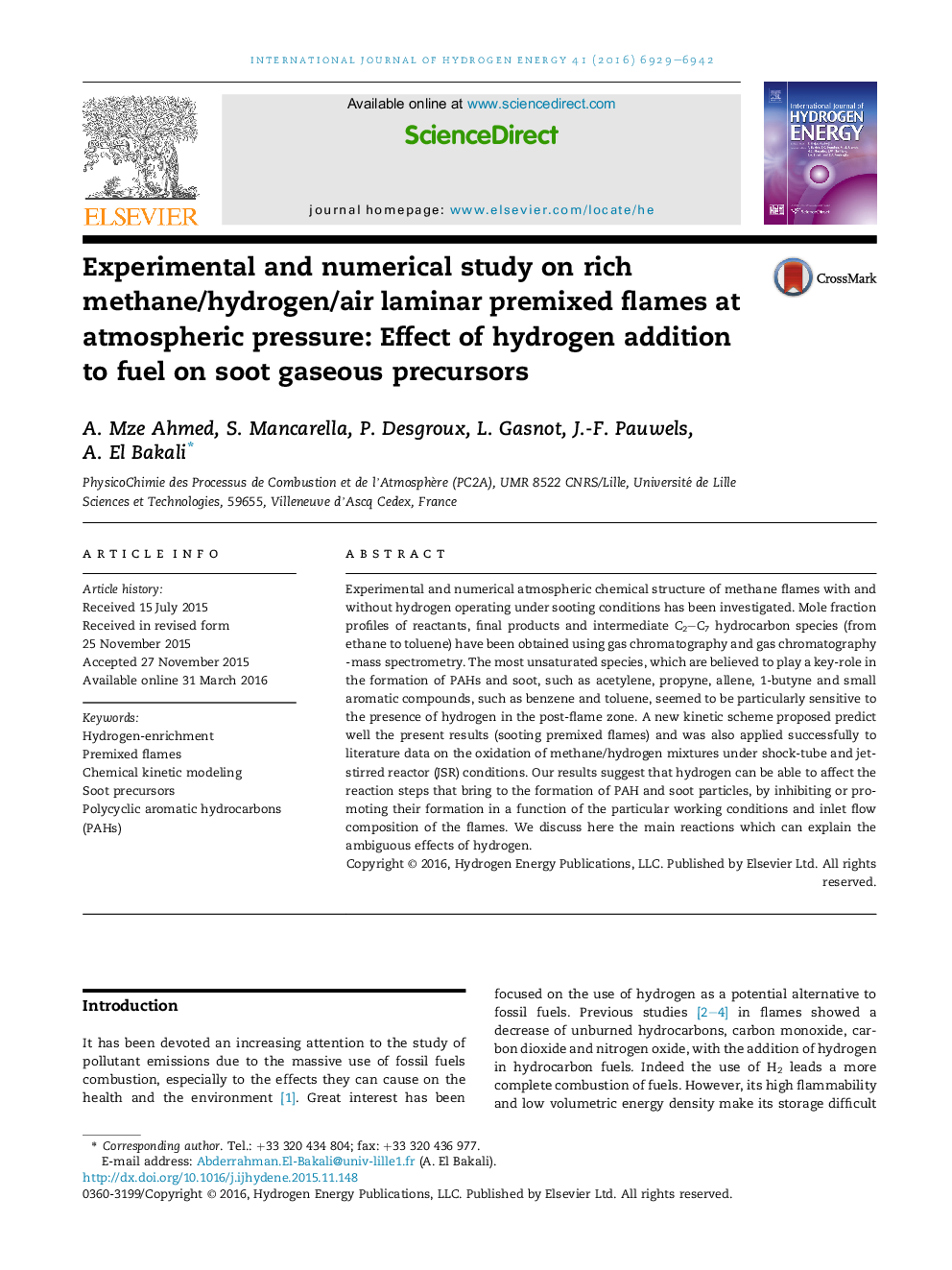| Article ID | Journal | Published Year | Pages | File Type |
|---|---|---|---|---|
| 1270698 | International Journal of Hydrogen Energy | 2016 | 14 Pages |
•Experimental and modeling investigation of CH4 flame with and without hydrogen have been performed.•Stable species mole fraction profiles have been obtained.•A new detailed reaction kinetic mechanism is proposed.
Experimental and numerical atmospheric chemical structure of methane flames with and without hydrogen operating under sooting conditions has been investigated. Mole fraction profiles of reactants, final products and intermediate C2C7 hydrocarbon species (from ethane to toluene) have been obtained using gas chromatography and gas chromatography -mass spectrometry. The most unsaturated species, which are believed to play a key-role in the formation of PAHs and soot, such as acetylene, propyne, allene, 1-butyne and small aromatic compounds, such as benzene and toluene, seemed to be particularly sensitive to the presence of hydrogen in the post-flame zone. A new kinetic scheme proposed predict well the present results (sooting premixed flames) and was also applied successfully to literature data on the oxidation of methane/hydrogen mixtures under shock-tube and jet-stirred reactor (JSR) conditions. Our results suggest that hydrogen can be able to affect the reaction steps that bring to the formation of PAH and soot particles, by inhibiting or promoting their formation in a function of the particular working conditions and inlet flow composition of the flames. We discuss here the main reactions which can explain the ambiguous effects of hydrogen.
